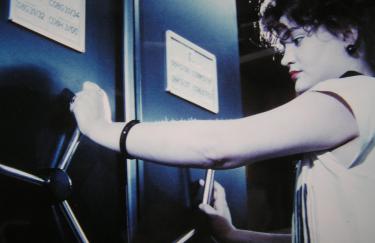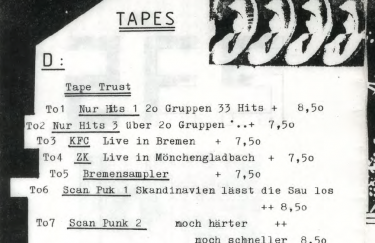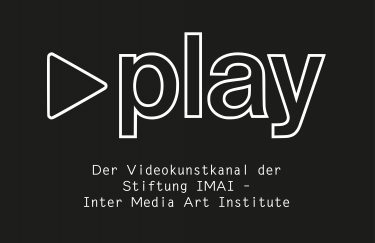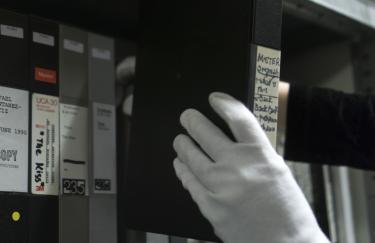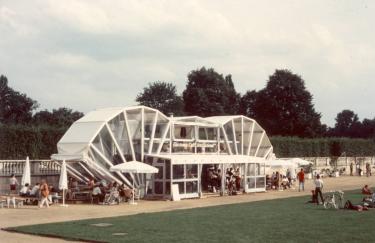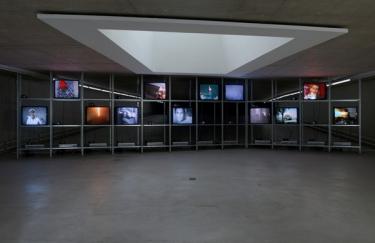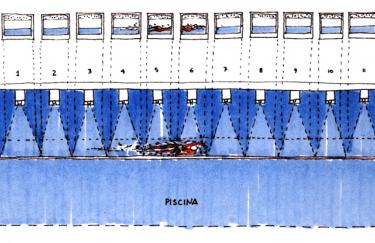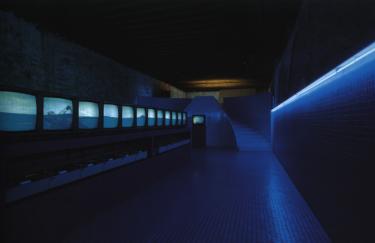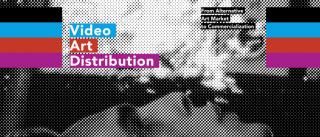
Video Art Distribution
From Alternative Art Market to Commercialization
Date
08.05.2018 - 09.05.2018Since the 1970s, in reaction to evolving video art, specialized distribution systems have been developed worldwide. As alternatives to the traditional gallery systems, video art distributors have introduced innovative structures for the sale, lending, and dissemination of such works of art. One important pioneer from 1971 onward was Electronic Arts Intermix in New York. Over the course of the following years, other initiatives were founded, for example, London VideoArts (now LUX), MonteVideo, and Time Based Arts in Amsterdam (later Netherlands Media Art Institute, now LIMA), Vtape in Toronto, Video Gallery Scan in Tokyo, and 235 Media in Cologne. Many of them still exist, or their work is being continued in other organizational forms.
Although these are conceptions for dissemination that have had and still have a lasting influence on the art system, this phenomenon has hardly been noticed at all thus far in art and media studies. The IMAI Foundation has provided impetus to research in this field with a comprehensive study of the media art agency 235 Media. The galleries that were the first in Germany to specialize in video art from the late 1960s onward have already been extensively researched: the television and later video gallery of Gerry Schum in Düsseldorf, the gallery space with video studio of the patron of the arts Ingrid Oppenheim in Cologne, and the Studiogalerie Mike Steiner in Berlin.
In contrast to them, video art distributors were motivated to develop new mechanisms for the production and dissemination of time- and technology-based art that took into account the specifics of this artistic genre. A concept of the initially unlimited—later increasingly limited—affordable edition was developed for reproducible works of video art. Whereas the uniqueness of the original or deliberately small editions provides the economic basis for galleries, video art distributors considered the medium’s inherent technical potential for reproductions of equal value that eliminates the difference in value between original and copy. The target audience, which for the conventional art trade is private collectors and museums, was expanded by video art distributors to include cultural organizations, festivals, educational institutions, libraries, television stations, and interested parties with a small budget.
This conference addressed on an international level the interactions between art production, the art market, and exhibition activity of media art. It worked out the historical conditions of the origins and the areas of responsibility of video art distributors, asked about their current fields of activity, and discussed the current challenges of Internet-based marketing strategies.
Location: NRW-Forum Düsseldorf
|
Tuesday, May 8 History of Video Art Distribution |
Wednesday, May 9 The Present and Future of Video Art Distribution |
|---|---|
| Words of Welcome Hans-Georg Lohe (Head of Duesseldorf Department of Culture) Axel Wirths (Director of 235 Media, Cologne) |
Lost Media Alive: The FRIGO Experience Rotraut Pape (Prof. of Film and Video, University of Art and Design, Offenbach am Main) |
| Video-Vision/Tele-Vision: Art Leaving the Conventional Cycles of Dissemination Renate Buschmann (Director of imai foundation, Duesseldorf) |
How Video (Art) Became Expensive Dieter Daniels (Prof. of Art History and Media Theory, Academy of Visual Arts, Leipzig) |
| Electronic Arts Intermix (EAI): An Alternative Model Across Time Lori Zippay (Director of Electronic Arts Intermix, New York) |
Distributing Artist Film and Video. Technical and Economic Challenges in a Digital Era Rolf Quaghebeur (General Director of Argos, Brussels) |
| Analogue Decades, Video Places and Distribution Ulrike Rosenbach (Artist, Cologne) |
To Distribute or not. Finding Balance between Alternative Art Markets and Commercialization Gaby Wijers (Director of LIMA, Amsterdam) |
| 235-->Audio-->Video--> Media. Video Art Distribution in Germany Jessica Nitsche (Research Fellow, imai foundation, Duesseldorf) |
Daata Editions and New Models for Artist Commissioning, Distribution and Exhibition David Gryn (Director of Daata Editions, London) |
| An Insider‘s View on Video Art (Distribution) in Germany A Conversation with Norbert Meissner (Artist, Leipzig) |
How Much Virtuality Can the Market Stomach? Julia Sökeland (Director of blinkvideo, Hamburg) |
| Setting Up Video Art Distribution in the UK: New, Different and Challenging Julia Knight (Prof. Em. of Moving Image, University of Sunderland) |
Why Video Art Shouldn’t Rely on the Art Market |
|
Video Gallery SCAN as Video Activism in Tokyo of |
|
- Dr. Renate Buschmann
- Dr. Jessica Nitsche
- Lara Perski, M. St.
Video recordings of the lectures can be found on the website of the Gerda Henkel Stiftung.



